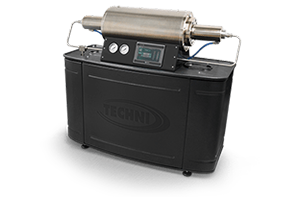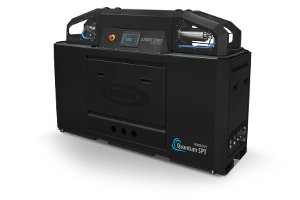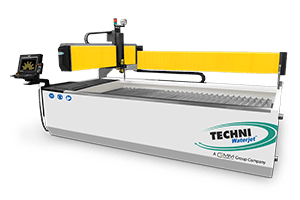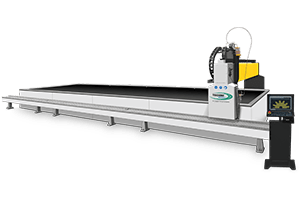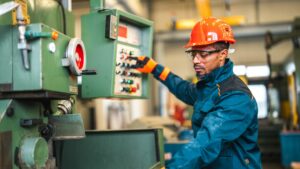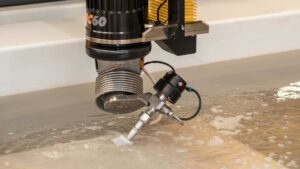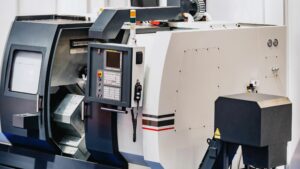Abrasion, the act of wearing something down through rigorous and continuous friction, has been pivotal to civilizations. From early man shaping tools to the precision machining of today, the journey of abrasives is a fascinating story of science, technology, and adaptability. In this guide, we shall delve deep into understanding the core of what abrasives are, their evolution, significance, and applications.
What is abrasive?
An abrasive, often envisioned as a hard substance, is crucial for a variety of activities, ranging from grinding to polishing. Deriving its name from the Latin word ‘abradere’, meaning “to scrape off”, abrasives work through a meticulous mechanism. The act of abrasion usually involves a harder substance known as an abrasive, which wears down the surface of a softer material.
Abrasives Historical Overview
The role of abrasives spans millennia. To truly grasp the essence of abrasives, it’s pivotal to understand their journey:
- Ancient Civilizations: Early civilizations utilized natural abrasives like sand and stone to shape tools, polish jewelry, and create art.
- Middle Ages: During this period, the importance of abrasives amplified, with more refined tools making their way into the hands of craftsmen.
- Industrial Revolution: With the onset of the 18th century, the demand for abrasives surged as industries expanded. Emery stones became a popular choice.
- 20th Century: This century witnessed the rise of synthetic abrasives, such as silicon carbide and aluminum oxide, pushing the limits of abrasive technology.
What Constitutes an Abrasive Material?
Characteristics that define abrasive materials:
- Hardness: Hardness is paramount. A typical abrasive has to be harder than the material it’s working against.
- Toughness: An abrasive needs to withstand the pressure exerted during the grinding process.
- Grain Structure: Determines the efficiency and finish of the abrasive action.
What Makes Abrasive Minerals Special?
Abrasive minerals, including corundum and diamond, are prized for their unparalleled hardness and durability. Their molecular composition makes them naturally equipped to handle intense friction and wear.
Are All Abrasives Made of Minerals?
While many abrasives are mineral-based, the 20th century introduced synthetic or man-made abrasives. These, such as silicon carbide, can often outperform their natural counterparts in certain applications.
What Types of Abrasives Are There?
There’s a staggering array of abrasive options tailored to specific tasks and materials.
What are Natural Abrasives?
These are derived directly from the Earth, with examples including sandstone and diamond. Their properties vary, with some like diamond, excelling in hardness and durability.
What Are Bonded Abrasives?
Bonded abrasives are those bound together into a solid form using a binding material. They find wide applications in grinding and cutting:
- Applications: Precision grinding, rough grinding, cutting.
- Properties: Offer a fine finish, long lifespan.
- Examples:
- Diamond: Hardness (Mohs: 10, Vickers: 10,000, Knoop: 8,000)
- Corundum: Hardness (Mohs: 9, Vickers: 2,000-3,000, Knoop: 2,000-3,000)
What Are Coated Abrasives?
In coated abrasives, grains are fixed to a backing material, such as paper. Examples include sandpaper.
- Applications: Polishing, finishing, and fine-grinding.
- Properties: Flexible, provides a uniform finish.
- Examples:
- Emery: Hardness (Mohs: 7-9, Vickers: N/A, Knoop: N/A)
- Sandpaper: Hardness (Mohs: 6-7, Vickers: N/A, Knoop: N/A)
What are Synthetic Abrasives?
Synthetic abrasives are manufactured, often boasting qualities surpassing natural abrasives.
- Examples:
- Silicon Carbide: Hardness (Mohs: 9.5, Vickers: 2,500, Knoop: 2,480)
Are There Other Types of Abrasives?
Apart from the common abrasives mentioned, several specialty abrasives cater to niche applications.
How Are Abrasives Fabricated into Useful Forms?
The world of abrasives is vast and complex. At its core, an abrasive is a material, often mineral-based, that is used to shape or finish workpieces through a rubbing action. Its function hinges on its hardness, typically being harder than the workpiece itself. So, how are these abrasives fabricated into forms that are functional for various industries?
What Are the Steps in Abrasive-Product Manufacture?
Before we dive into the specific processes of abrasive product manufacture, it’s important to note that the process varies depending on the type of abrasive being made. However, some general steps can be identified across the board.
- Selection of Raw Materials: Abrasive products can be made from a variety of materials such as aluminum oxide, silicon carbide, or diamonds. The choice of material determines the abrasive’s hardness, grain size, and overall efficiency.
- Mixing and Bonding: The abrasive grains are mixed with a binder material. This can be a resin, rubber, metal, or even a vitrified substance. The binder holds the abrasive particles in place.
- Shaping: The mixture is then shaped into the desired form. This could be wheels, belts, discs, or any other shape suitable for specific tasks.
- Firing or Curing: Depending on the binder used, the shaped abrasive might be fired in a kiln or cured under specific conditions. This process solidifies the product and determines its final hardness.
- Final Touches: Once the abrasive product is formed, it may undergo additional processes like coating or adding a backing material.
How Are Grinding Wheels Formed?
Grinding wheels, one of the most commonly used abrasive products, have their unique manufacturing process.
- Blending the Grains: The primary abrasive grains, whether it’s silicon carbide or aluminum oxide, are mixed with bonding agents. Sometimes, additional materials are added to enhance grinding wheel performance.
- Pressing the Mixture: This blended mixture is then pressed in molds to achieve the desired shape of the grinding wheel.
- Firing the Wheel: The molded wheel is then fired in a kiln. This vitrifies the wheel, binding the grains firmly.
- Inspecting and Testing: Every grinding wheel is meticulously inspected for balance and integrity. Some may undergo further testing, like a rotation test to ensure safety and efficiency.
What Does Truing, Grading, and Testing Involve?
In the world of abrasives, truing, grading, and testing are vital processes. They not only determine the efficiency of the abrasive but also ensure safety.
- Truing: Over time, grinding wheels may lose their original shape. Truing is the process of restoring the wheel’s geometry, ensuring it works optimally.
- Grading: This pertains to determining the abrasive’s hardness. It’s a measure of how easily the abrasive grains are dislodged from the surface when in use.
- Testing: Beyond the shape and hardness, abrasives undergo various tests. These tests assess attributes like tensile strength, safety in rotation, and more. Such evaluations ensure the abrasive’s durability and safety.
Understanding these procedures is critical, especially when we reflect on the myriad applications of abrasives.
What Are Abrasives Used For?
Abrasives have carved their niche in numerous industries, thanks to their unique properties. Whether it’s polishing a delicate piece of jewelry or grinding down a massive metal slab, abrasives play a pivotal role.
How Are Abrasives Used in Grinding?
Grinding, in essence, is an operation where chips are removed by grains bonded into a form of grinding wheels. The fundamental mechanics of grinding are simple: the abrasive grains on the wheel’s surface cut tiny chips from the workpiece, rendering a smooth finish.
Advantages:
- Precision: Abrasives, when used for grinding, offer a high degree of precision. They can achieve intricate shapes and designs on workpieces.
- Durability: Grinding doesn’t just shape the workpiece. It also strengthens it by inducing compressive residual stresses.
How Are Abrasives Used in Cutting Wheels?
Cutting wheels are thin, sharp discs used for cutting metals, concrete, and masonry. The type of abrasive used and its grain size greatly impacts the wheel’s efficiency.
- Diamond Cutting Wheels: Ideal for cutting hard substances. Diamond, being the hardest known material, can cut through almost anything.
- Aluminum Oxide Wheels: Suitable for cutting and grinding metals like iron and steel.
- Silicon Carbide Wheels: These are commonly used for cutting masonry, concrete, stone, and non-ferrous metals.
Each type serves specific purposes, and their selection is often based on the nature of the job and the workpiece involved.
What Is the Role of Abrasives in Tool Sharpening?
From our kitchen knives to industrial cutting tools, everything needs periodic sharpening. Here, abrasives play a pivotal role.
- Industrial Application: In industries, tools like drills, end mills, and other cutting tools wear down with use. Abrasives, particularly grinding wheels and sharpening stones, help restore their cutting edges.
- Home Application: At home, we often use sharpening stones, sometimes impregnated with diamond particles, to maintain the sharpness of our knives, scissors, and other tools.
Metal Cleaning
Abrasives have secured a solid place in metal cleaning operations. Metal surfaces, over time, accumulate rust, paint, and other unwanted layers. Using abrasive blasting, where abrasive particles are propelled against the surface, these impurities are stripped off, revealing a clean, shiny surface underneath.
Whether it’s the fine grains in a sandpaper smoothing out a wooden surface or a massive grinding wheel shaping a block of metal, abrasives are indispensable. Their selection, usage, and maintenance, however, require knowledge and care. Choosing the right abrasive for the right job, using it correctly, and ensuring safety are paramount.
What Industries Rely on Abrasives?
Abrasives, a collection of substances used for grinding, polishing, and cutting, have found their niche in various industries. The ubiquity of these materials is evident in numerous applications, all of which require a precise touch or a rigorous grind.
- Automotive Industry: Utilized in cleaning, grinding, and polishing metal surfaces or parts.
- Woodworking: Sandpapers and grinding wheels refine wooden pieces to desired finishes.
- Metal Fabrication: Essential for achieving smooth finishes or removing excess material.
- Construction: Used for surface preparation and material removal.
- Dentistry: Polishing tools and substances help refine dental pieces.
- Jewelry Making: Polishing and refining precious metals and gemstones.
- Electronics: Surface preparation of silicon wafers and other components.
How to Choose the Right Type of Abrasive?
Determining the appropriate abrasive for a task might feel like sifting through a maze. However, with the correct factors in mind, the process can be simplified. Begin by considering the nature of the workpiece. Its inherent characteristics or composition can guide your choice.
For instance, brass mirrors and certain shapes may necessitate different abrasive methods. Following this, the intended outcome, whether a matte finish or a polished sheen, can further influence the decision. Let’s dive into the specifics:
- Shape of the Workpiece: Reflect on the item’s form and structure. Complex shapes may require specialized tools or techniques.
- Size of the Workpiece: Dimensions, both large and small, can influence the abrasive choice.
- Nature of the Workpiece: Elements like composition or inherent traits play a role.
- Desired Finish: Whether it’s a rough texture or a polished appearance, each end goal requires a different approach.
- Type of Abrasive Material: Options abound, from natural sharpening stones to bonded abrasive grinding wheels.
- Application Techniques: Commercial applications often differ from individual ones, leading to varied finishes, such as hollow vs. convex grinds.
- Workpiece Material: As highlighted earlier, certain materials, like brass mirrors, necessitate unique abrasive methods.
- Shapes of Adhesive: Abrading certain areas may be challenging due to particular shapes.
- Health Hazards: Awareness of risks, such as dust production and the potential for silicosis, is crucial.
- Lubricant Use: Lubricants, like water or oils, can diminish hazards while also affecting the abrasive process.
- Efficacy Over Time: Remember that some abrasives might lose their effectiveness quicker than others.
- Price of the Abrasive: Economic factors often influence decision-making.
How Does Shape, Grain, and Size Affect Choice?
Shape, grain, and size – these criteria act as pillars when choosing abrasives. Their implications on performance cannot be understated.
- Shape: The form of an abrasive determines its suitability for different tasks. For example, belts might be optimal for long surfaces, while discs could excel at rounded tasks.
- Grain Size: Grain size affects the finish. Coarser grains remove more material but leave rougher surfaces. Conversely, finer grains produce smoother finishes but remove less material.
- Size: The dimensions of the abrasive tool itself, be it a sheet of sandpaper or a grinding wheel, can dictate its utility in specific applications.
Are There Alternatives to Using Abrasives?
Indeed, as technology and innovation surge forward, alternatives to traditional abrasives have emerged. Some examples include:
- Dry Ice: Unlike conventional abrasives, dry ice offers a non-abrasive, chemical-free method to clean surfaces. Its primary advantage is its ability to evaporate, leaving no residue.
- Laser Cleaning: An innovative method that utilizes concentrated laser beams to remove contaminants or coatings from a surface. Its precision stands out.
- Water Jet Cutting: A non-thermal method that avoids heat-related complications.
- Electrochemical Machining (ECM): Utilizes anodic dissolution to remove material.
- Ultrasonic Cleaning: This employs ultrasonic waves in a liquid medium to clean items. Ideal for intricate items with crevices.
While these methods hold their merits, each has its trade-offs, emphasizing the importance of proper evaluation based on specific needs.
Are Abrasives Safe to Use?
The very nature of abrasives implies a degree of roughness and hardness. This leads to a crucial question: are they safe to use? The answer isn’t black and white. The safety of abrasives largely hinges on how they are utilized.
What Are the Safety Tips When Using Abrasives?
Safety is paramount, especially when dealing with materials that have the potential to harm. It’s essential to understand the precautions to take to ensure a safe working environment.
- Protective Equipment: Always wear safety glasses and gloves.
- Dust Protection: Employ a mask, especially when working with materials that produce fine dust.
- Proper Handling: Handle with care to avoid cuts and injuries.
- Storage: Store abrasives in a dry, cool place away from children.
How to Get the Best Out of Your Abrasives?
Maximizing the potential of your abrasives not only ensures efficiency but also prolongs their lifespan. One cannot merely use an abrasive; it requires a certain finesse.
Pro Tips:
- Select the Right Grain Size: Depending on the task, choosing the right grain size can make a significant difference.
- Apply Appropriate Contact Force: Too much force can wear out the abrasive quickly and may not yield the desired results.
- Regular Maintenance: Clean and check your abrasives regularly.
What Are the Costs Associated with Using Abrasives?
Cost plays a crucial role in the decision-making process. In the context of abrasives, the price spectrum can vary based on the type, origin, and purpose. For instance, diamond abrasives, renowned for their hardness, might be on the pricier end, while sandpaper, commonly used for household tasks, is relatively more affordable.
Is There a Way to Lower Costs?
Cost-effectiveness is not just about purchasing cheaper products; it’s about maximizing the value of what you buy.
- Bulk Purchase: Sometimes, buying in larger quantities can offer financial benefits.
- Maintenance: Regular upkeep can prolong the life of the abrasive, offering better value for money.
- Correct Usage: Using the abrasive correctly can prevent premature wear and tear.
Conclusion
Abrasives, with their varied types and applications, have firmly entrenched themselves in both industrial and domestic settings. While they offer unparalleled advantages, it’s imperative to understand their nuances, from safety precautions to cost implications, ensuring their optimal use.
FAQs
1. What is the most commonly used abrasive?
The answer is Aluminum Oxide. Known for its hardness and durability, it’s often used in sandpaper and grinding wheels.
